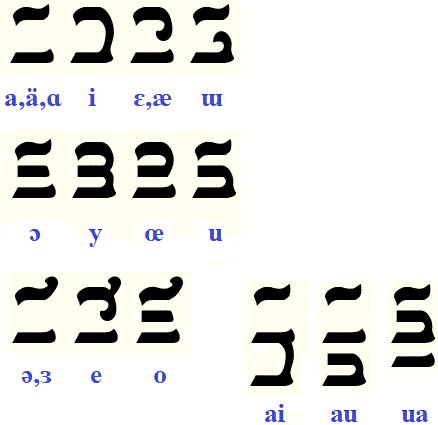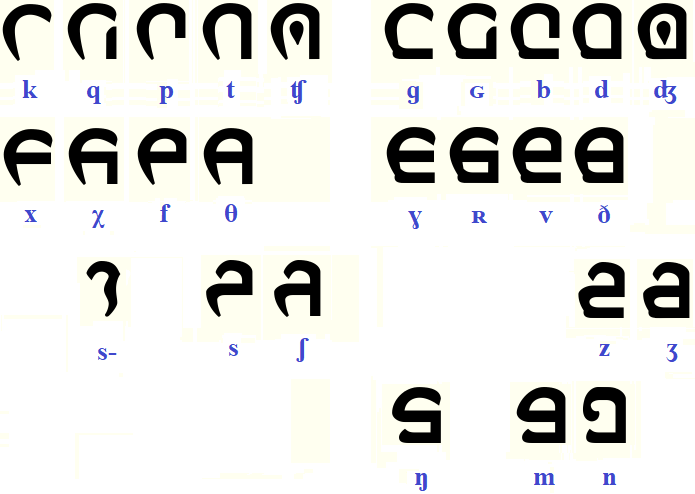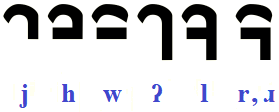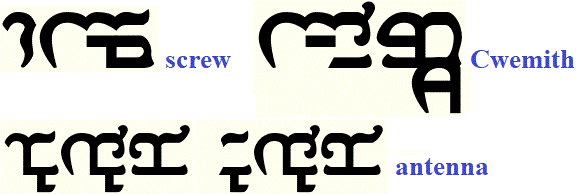This is another easily hand-written, phonetically constructed alphabet, like others in my Phonological Cypher series. The aim was to have syllables constructed regularly into what look like individual glyphs. In addition, it was desirable to have an option for subscripted letters in situations other than simple CV, similar to how they appear in scripts like Pallava and Lanna.
Vowels
Vowels attach to the right of their consonant, as in a syllabary. Rounded vowels have a central horizontal bar. All vowels have a horizontal base stroke to show they are voiced. A small curl added at the top right makes the vowel more closed. For diphthongs, the second vowel (usually /i/, /u/ or /a/) is attached below the first. The “closing” curl on a diphthong only applies to the first vowel.
Primary consonants
Voiced consonants (except those which can appear in medial position) have a horizontal base stroke. Fricatives and most continuants have a central horizontal stroke.
Medial consonants
Medial consonants may either come at the beginning of a CV syllable shape, or between an initial consonant and the vowel. A medial /j/ can be used to palatize a consonant, medial /h/ can be used for extra aspiration, medial /w/ can be used to labialize a consonant, medial glottal stop can be used to form ejectives and implosives, and medial /r/ can be used to shift a consonant to a rhotic/retroflex position.
Special forms
There is a specific glyph (listed above) for syllabic-initial /s/ in situations of clusters such as /sk/, since /s-/ is a common candidate for clusters. Syllabic-final consonants (as in the form CVC) may be attached below the vowel. Ideally, subscripting should not descend too far, to avoid line collisions; the limit here would be two letters, resulting from CVVC with -VC being subscripted, C below the second V. There is a special compact form for a pre-nasal, where a nasal is followed by a consonant at the same location (such as /nt-/), or for a doubled nasal – a generic mark below the vowel where the full form of a specific nasal would be. As for initial vowels, my usual strategy is to have a glottal plosive written before them, but in this script they look OK written solo.
Medial consonants also, except for /j/ and /w/ (when /i/ and /u/ should be used), may sit under a vowel in CVC form.
Example
This is a transliteration of the beginning of Shakespeare’s sonnet 18, for comparison with versions of SIGIL etc etc.
Shall I compare thee to a summer’s day ...





